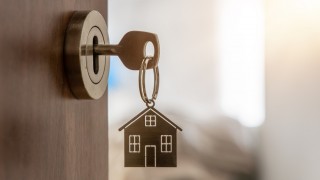Your utility bills have likely risen with other essential costs, such as groceries and housing. But you can do a few simple things to reduce energy use and save money.
Your home energy charges, measured in kilowatt-hours (kWh), are the most significant part of your bill.
Reduce Electricity Usage
Your electricity bill lists the amount of energy you use, measured in kilowatt-hours. You can cut these home energy charges by reducing your electricity consumption, such as swapping out standard incandescent light bulbs for energy-efficient ones or using an advanced power strip to reduce “vampire” electricity that appliances and electronics use while plugged in.
By conserving energy, you can contribute to the reduction of fossil fuel consumption. Coal and natural gas are used in power plants to generate electricity, and your efforts to use less energy can help save these valuable resources. This decreases the energy demand, helping to lower costs during peak energy use times.
Switch to a Time-Based Rate
Time-based rates align electricity costs with the cost to produce energy at different times of day, week, and year. By shifting usage to off-peak times, you can have savings on your energy bill.
Smartly designed residential time-varying rates can reduce peak demand, saving customers and utilities money. These plans allow members to reduce their energy bills by re-programming appliances (like your washing machine and dryer) to run during off-peak hours and installing home energy management systems.
Switch to a Fixed-Rate Plan
Inspire’s fixed-rate plan offers customers certainty that their energy costs will stay the same, month after month. This can help you budget energy costs and avoid unexpected rate spikes during peak seasons.
Explore your options for the right energy rate type and structure by comparing plans in our marketplace.
Change Your Thermostat Settings
Keeping your home at the right temperature can save energy.
During the winter, a lower interior temperature slows heat loss and saves energy on heating costs. A higher indoor temperature in the summer helps you save on cooling costs. Having this in mind and implementing it will help you on how to reduce electric bill. Changes to your thermostat settings are made weekly or daily, depending on the type of programmable thermostat you have. These changes can be easily automated.
Use Energy-Efficient Appliances
Energy-efficient appliances are not only more cost-effective, but they help reduce your electricity usage. By selecting appliances with the energy star label, you can reduce your electricity costs by ten to fifty percent.
Look for the silver energy label on your appliance. Then, find the wattage and divide by 1,000 to get your appliance’s energy use in kilowatt-hours (kWh). You can multiply that number by your electric rate to calculate your monthly kWh cost. Using less energy also helps reduce greenhouse gas emissions and water usage.
Install a Smart Thermostat
Compared to regular programmable thermostats, smart thermostats are more energy-efficient. They can learn your habits and provide energy reports that let you know how much electricity your home uses regularly.
Smart thermostats save about 8% of heating and cooling costs on average. However, savings vary by climate and whether the thermostat is energy star certified. To receive this label, a thermostat must be tested in real homes using real-world energy data. Energy Star also requires smart thermostats to include motion sensors and geofencing features.
Switch to Energy-Efficient Lightbulbs
It is important to note that lighting usually accounts for approximately 15% of a household’s energy usage. Upgrading to energy-efficient bulbs helps save money on your utility bill.
Light-emitting diode (LED) bulbs are the newest, most advanced, energy-efficient bulb technology. They use up to 75% less energy than incandescent bulbs and last up to 25 times longer.
CFLs were introduced in residential homes due to new energy star standards. They’re shaped like larger fluorescent tubes and screw into standard sockets. They are an affordable and environmentally friendly option. They can also pay for themselves in just a few months.
Switch to Energy-Efficient Appliances
Just like building codes help ensure new homes and buildings use advanced technologies, DOE efficiency standards do the same for appliances and equipment. As a result, these standards save consumers money, increase energy security and reduce pollution.
Energy-efficient appliances and equipment are an inexpensive way to reduce energy costs and carbon emissions. For example, replacing an old refrigerator with a new energy star model uses 75 percent less energy and costs half as much as a traditional fridge.
Energy efficiency can ease the burden on families with high energy bills by making their power more affordable. It also improves the health and comfort of households.
Using energy-efficient appliances helps reduce utility bills while conserving natural resources and minimizing pollution.
Appliances like refrigerators, clothes washers, and dryers use up to 20 percent of your household’s energy bill. Replacing older appliances with newer ones can help reduce this amount.
These appliances are more efficient than those made ten years ago, reducing electricity costs. Plus, they reduce demand on the national power grid and support energy-related jobs.
Implementing efficiency measures can lower energy costs and also have a positive impact on reducing air pollution and greenhouse gas emissions, which are significant contributors to climate change. Reducing nationwide energy consumption through efficiency measures could save six lives daily and prevent respiratory diseases.



